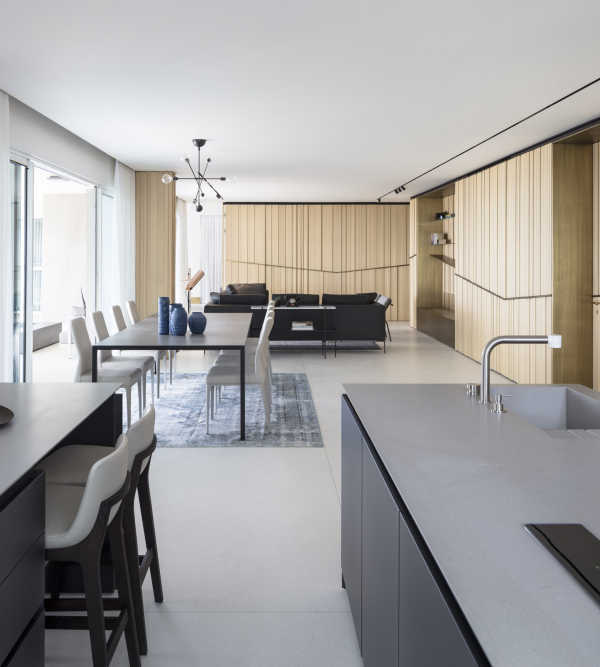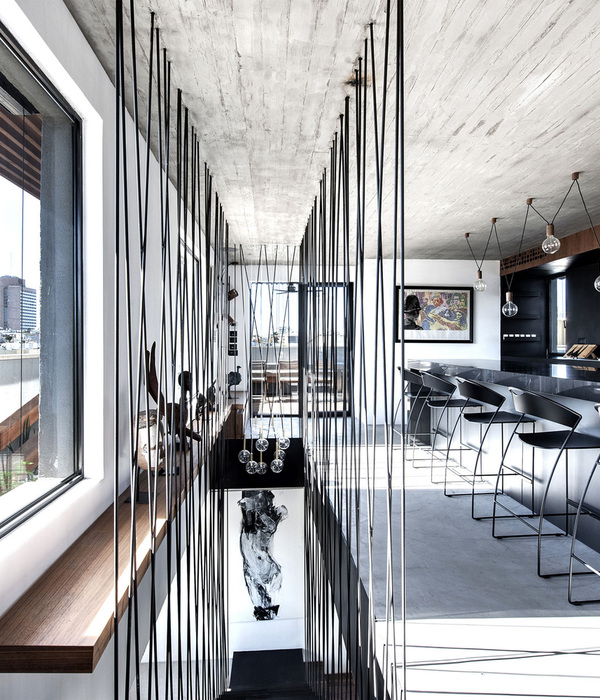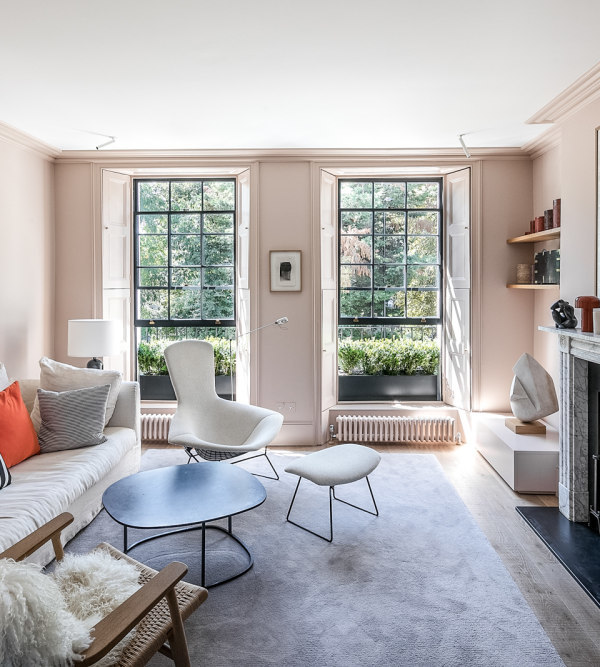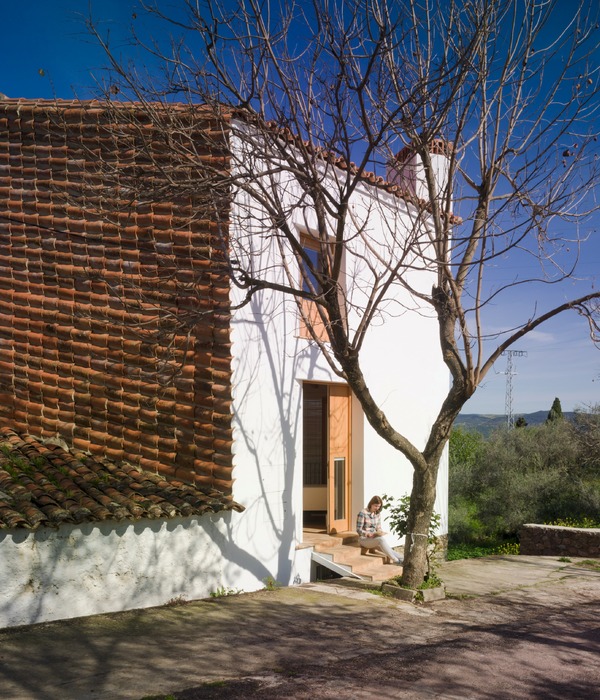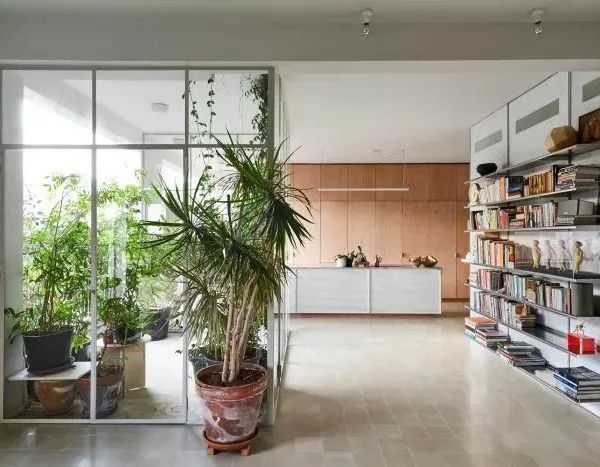来自
ASLA
Weather Smithing – Assessing the role of vegetation, soil, and adaptive management in urban green infrastructure performance by
Andropogon Associates
.
Appreciation towards
ASLA
for providing the following description:
项目陈述
PROJECT STATEMENT
景观建筑师正面临着逐渐增长的在城市中设计高效景观的压力。然而,相关的管理要求和工程模型往往不能将不同环境下绿色基建的效果进行量化,尤其在计算土壤贮能和蒸散损失方面缺乏可行的方法。具体了解绿色基建在改善城市环境中的表现对于引入新的工程模型,完善相关法规和优化可持续景观设计都有重要意义。为了弥平这一科学和政策之间的知识缺口,设计师和科学研究员在一座新建的非渗透性城市公园中合作开展了一项为期三年的研究。团队对雨水流失量、水质、土壤和植被进行监控,以了解基础设施的表现并且评估适应性管理的长期效果。设计师们根据需求改善了维护方案,提高了景观的性能。研究成果表明公园可以多管理超过工程模型预期三倍的雨水。
Landscape architects face increasing pressure to design high-performance landscapes in cities where regulatory requirements and underlying engineering models tend not to reflect the measurable capacity of green infrastructure within different contexts, particularly soil storage and evapotranspiration. Understanding how built green infrastructure performs is critical in informing new engineering models, advocating progressive regulations, and advancing sustainable landscape design. To help address this knowledge gap between science and policy, designers and scientific researchers collaboratively pursued a three-year study at a newly-built, non-infiltrating urban park. The team monitored runoff volume, water quality, soils, and vegetation to better understand the infrastructure’s performance and evaluated the long-term impacts of adaptive management. The designers modified maintenance protocols as needed to increase landscape performance. Findings reveal that the park has the potential to manage more than three times the stormwater that the engineering models predicted.
△ 生态实验室 – 位于大学校园中一片占地2.75英亩的城市公园被用作研究多重绿色雨水基础设施(GSI)系统、以及适应性管理策略对其性能影响的实验地。
LIVING LABORATORY. A recently completed 2.75-acre urban park set within a university campus was utilized as a testing ground to assess the performance of multiple green stormwater infrastructure (GSI) systems and to understand how an adaptive management strategy influences performance.
Photo Credit: Barrett Doherty and Andropogon
项目说明 PROJECT NARRATIVE
市民和专业领域都在不断向景观建筑师施压,希望他们可以设计出高性能的多功能景观,特别是在土地稀缺的城市区域,这一需求尤为强烈。单独的绿色雨水基础设施(GSI)构件的效果数据已经越来越稳定可信,但以下两个方面的数据却仍处于缺失状态:1)多个GSI构件在基地中一段时间内的整体表现;2)适应性管理对景观效果的影响。大多数工程模型和现行法规中没有将GSI在不同环境下的表现纳入考量,而是使用通用规则进行计算。景观建筑师需要实地测量的数据以深入了解GSI项目在长时间内的表现,并且找出合适的管理方法,以让此基础设施达到最佳效果。该信息可以帮助景观建筑师引入新的工程模型,推行新的GSI政策法规和优化可持续景观设计及管理。
为了了解相互联系的GSI元素在适应性管理下的整体表现,一个由设计师和学院联合的研究团队在城市大学校园中一座占地2.75英亩的城市公园内开展了一项为期三年的调研。项目开设了景观监控课程供学生学习,并且为更广泛的专业及法律领域提供了实地收集的GSI表现数据。调研与学校、政府和设计专家建立起合作关系,从基地上获取一手数据,帮助研究团队更好地了解了给予绩效的景观设计,并建立了一套适应性管理方式以维持和强化现行的景观管理系统。
基地选择
项目基于以下原因选择了这座非渗透性公园进行GSI监控:
学院安排:业主为一所综合性大学,致力于将课堂延伸到景观之中并在校园中展示健康可持续的景观实践。
有限的排放点:公园的大部分区域下都设有地基,如同绿化屋顶一般,雨水溢流只会通过两合流下水道排出。
整体GSI设计:在公园内,工程土壤、精心挑选的植物和雨水收集灌溉系统被设计成为了一个整体。基地内绝大多数的水都在GSI系统之中,包括草坪下储水沙床、4700平方英尺的雨水花园、20000加仑蓄水池支持的灌溉系统、本地植物基床和连续的树沟。
适应性管理程序:学校为适应性管理提供了支持,旨在随着时间流逝加强基地的雨水管理系统。程序包括使用堆肥茶,监控灌溉,使用可选防冻盐,监控土壤和植物和修复土壤与草坪。
地区环境:公园处于城市之中,其中设有一条老化的合流下水道,急需进行GSI效果研究并对传统工程模型进行比较分析,发掘高效土壤和植被的真正价值。
研究目标与手段
研究的目的是在城市配置下对现行的GSI效果工程模型进行评估,并将结果反馈给大学的设施管理者,帮助他们提高整个校园的景观表现。调研主要想解决的问题如下:
土壤和植被究竟对雨水管理做出了多少贡献?
沙基土壤和有机草坪管理系统是否有助于景观的健康,包括避免凝结和最大化蒸散量?
适应性管理对景观效果有何影响?
为了回答上述问题,研究团队对雨水流失量、水质、土壤、植被和社会使用实施了监控,用以了解基地作为一个综合GSI系统是如何运行的。研究人员运用了多种手段分析公园建造前、建造中和建成后的状态,对景观效果的变化进行了深入了解,并为管理程序提供了参考。
研究成果
为期三年的景观适应性管理评估成果如下:
1. 整体GSI设计能够管理超过工程模型预期3倍以上的雨水。
建立在当地暴雨控制管理条例之上的工程模型并未考虑到公园内能够大量储存水源的高效设计土壤、能够大量蒸发水分的高效能植被以及利用蓄水设备二次利用雨水灌溉植被的灌溉系统的作用。监控期间最大的一场降雨过程出现在2013年6月7日,总降雨量达到了3.14英寸。景观工程模型预测基地仅能处理1英寸的降雨量,然而在整个降雨过程期间并未有雨水溢出,汇入市政排水系统中。
适应性管理回应:
在监控期间,共计有7次雨水总量临近产生溢流,且仅有一次雨水溢流至市政排水系统之中,而其中6次逼近临界值的降雨发生在为防治除冰盐污染水源而季节性关闭蓄水设备的冬季。而假如蓄水设备在冬季也能如常使用,即使面临更大的降水量雨水溢流也不会发生。面对这种情况,设计团队为蓄水箱加入了盐度监控设备,保证其在冬日的工作运行。
2. 灌溉系统监控对于预防储水设备溢流至市政管道和可持续雨水管理都极为重要。
剩余的一次逼近临界值的降水与雨水溢流皆发生在旱季。公园管理手册建议在该季节应每周浇灌1英寸水源,然而在这两次事件中灌溉设备被错误设置至喷淋每天喷淋4英尺水源。
适应性管理回应:
主动性监测系统将显示灌溉系统问题,并在过度灌溉时持续性地为景观管理人员提供数据。灌溉系统的无监管或错误监管将为引发一系列的问题,并最终导致非必要性的雨水溢流。
3. 泛滥平原的原生植被与不经压实的草地是雨水管理的主力军。
即使在都市环境之中,泛滥平原的原生植被也起到了极为突出的雨水蒸腾作用。孔隙度仪的测量数据显示公园内仍处在生长盛期的二色栎每棵树木的日蒸腾量达到了35加仑。而随着树木的日益成熟,这个数据还将进一步上升。而不经压实的草地也在贡献着自己的力量,蒸腾量与压实性在数据上成反比,而利用场地中的土壤湿度计,将这些数据与土壤蒸发数据一同测算,以了解每日土壤的蒸发量。
适应性管理回应:
初步数据表明在设计GSI系统时,应尽可能延长水分在植物根际范围中的事件,以保证在不影响植被生长与健康的同时,尽可能的通过土壤与植被蒸发、蒸腾水分。利用可回收使用的暴雨雨水和空调冷凝水的灌溉系统使得水源在植物系统中形成了循环,进一步提高了水分蒸发、蒸腾的可能性。
总结
本次的调研监控证明了高效设计土壤、恰当的植被种类选择、二次利用的灌溉水源以及适应性管理将大大降低雨水溢流至市政管道的几率,管理超过工程模型预期三倍的雨水。当然,GSI策略的高效推广与应用仍需更多的实地试验,以确定能够适应更广泛情况、管理最多雨水的土壤配比与植被种类。本次研究不仅能够进一步推广GSI系统的使用,同时也能通过诸如SITES和生态建筑挑战等项目实现区域零净水的目标。
△ 绿色基础设施能效 – 尽管人们对GSI的兴趣日益浓厚,但在诸如植被选择、土壤能效提升、循环水源灌溉以及适应性管理策略等相关元素将如何影响GSI表现性能的领域仍缺乏有效的实验支持。
GREEN INFRASTRUCTURE PERFORMANCE. Despite growing interest in GSI, there is a lack of research devoted to how integrated GSI elements, such as plant selection, soil enhancement, recycled-water irrigation, and adaptive management strategies, can be maximized to support performance.
Photo Credit: Barrett Doherty and Andropogon
△ 设计性能 – 依照当地条例,能够管理1英寸降雨量的GSI系统应当包括:地平线下沙质存储床,设计配比土壤,配有水箱、循环利用暴雨和空调冷凝水的灌溉系统、本土植被以及雨水花园。
DESIGNED CAPACITY: Designed to capture a minimum 1-inch storm event, per municipal requirements, key GSI components include: below-ground sand storage bed; engineered soils; an irrigation system that reuses stormwater and AC condensate via a cistern, native plants, and a rain garden.
Photo Credit: Barrett Doherty and Andropogon
△ 宜人的设计 – 开阔而易于行走的路径环绕着公园中心巨大的半圆形绿地,在高密度的城市中打造了一片层次丰富的绿色空间,为使用者提供了一个沉浸在自然之中片刻喘息的机会。
DESIGN AMENITY: The park design centers on a large, semicircular green that is framed by sweeping, accessible pathways, offering respite from the dense, urban setting by providing a multitude of experiences for users to immerse themselves in nature.
Photo Credit: Barrett Doherty and Andropogon
△ 高性能土壤 – 公园中最重要的GSI元素为其经过配比设计的高性能土壤 - 草坪下3英尺深的存储土床、为雨水花园特设的土壤、灌木草本种植床以及木本植物的种植床。土壤有粗沙、沙壤土和3-5%有机物质混合而来。
HIGH-PERFORMANCE SOILS: The park’s largest GSI feature is engineered soils, including a 3-foot-deep storage bed below the lawn and specialized soils for the rain garden, landscape beds, and tree trenches. Soils are a mix of coarse sand and sandy loam with 3-5% organic matter.
Photo Credit: Barrett Doherty and Andropogon
△ 本土植被群落 – 多样化的植被选择在不同的季节为场地带来了弹性与美感,为动物提供了栖息地,也不断地蒸腾着场地中的积水。植被群落的确立以Delaware河流域以及Piedmont高地的生态物种为灵感。
NATIVE PLANT COMMUNITIES: Vegetation was selected to provide diversity, habitat, resilience, and beauty throughout the seasons, as well as to serve as hard-working transpiration machines. The Delaware River Terrace and Piedmont Uplands eco-regions provided plant community inspiration.
Photo Credit: Barrett Doherty and Andropogon
△ 研究目标 – 本次研究旨在评估城市环境中GSI表现性能的工程模型,并为大学设施管理人员给出反馈意见,以改善校园整体的景观表现性能。
RESEARCH GOALS: The research aimed to evaluate the engineering model assumptions of GSI performance within an urban setting and to provide feedback to the university’s facilities managers to improve campus-wide landscape performance.
Photo Credit: Barrett Doherty and Andropogon
△ 研究分类 – 在选择评估水源(地表径流量、质量),土壤(物理、化学、生态性),植被(活力、尺度、根系深度、蒸腾量)、灌溉系统、生物栖息地、微气候以及人类使用性能的监测方法和设备时,设计团队兼顾了成本效益与监测的准确性。
RESEARCH CATEGORIES: Cost-effectiveness and accuracy were balanced when selecting both monitoring methods and instrumentation that were used to assess water (runoff volume, quality), soils (physical, chemical, biological), vegetation (vigor, size, turf rooting depth, transpiration) irrigation, habitat, microclimate, and human use.
Photo Credit: Barrett Doherty and Andropogon
△ GSI研究方法 – 设计团队使用压力传感器以测量水流量,以得到水平衡数据;使用张力计和土壤湿度计以获得土壤水分与蒸发量数据;使用树叶孔隙度仪和比色计得知植物蒸腾量。
GSI RESEARCH METHODS: For measuring the water balance, pressure transducers were used to measure water flow; for soil moisture and evaporation, tensiometers and soil moisture meters were used; and for vegetation transpiration, a leaf porometer and ceptometer were used.
Photo Credit: Barrett Doherty and Andropogon
△ 适应性管理策略 – 现场管理策略包括茶叶堆肥、灌溉系统监测、更换除冰盐种类、土壤与植被监控、土壤与草坪整治以及定期覆盖和修剪等常规维护工作。
ADAPTIVE MANAGEMENT STRATEGY: The site management included compost tea applications; irrigation monitoring; use of alternative de-icing salts; soil and plant monitoring; soil and turf remediation; and typical maintenance practices, such as regularly scheduled mulching, pruning, and mowing.
Photo Credit: Barrett Doherty and Andropogon
△ 超越预期 – 这座城市公园可以管理超过工程模型预期三倍的雨水。场地在历经热带风暴安德烈带来的2年一遇的降雨时并没有产生雨水溢流,无需市政排水管道的支持便安然度过。
EXCEEDING EXPECTATIONS: This urban park manages more than 3-times the stormwater runoff than the engineering models predicted. The site had the capacity to manage an approximately 2-year storm during Tropical Storm Andrea without overflows to the city sewer.
Photo Credit: Barrett Doherty and Andropogon
△ 适应性管理工作流程 – 高性能设计与监管土壤、植被健康,促使场地管理实践保持其高性能的适应性管理策略使得场地的整体表现最终优于预测模型。
ADAPTIVE MANAGEMENT WORKS: This site is performing better than engineering models predicted because of the high-performance design and the adaptive management strategies that were used to monitor soil and plant health, which informed site management practices that maintained their high performance.
Photo Credit: Barrett Doherty and Andropogon
△ 关键在于监控 – 灌溉系统监控对于预防储水设备溢流至市政管道和可持续雨水管理都极为重要。主动式的监控设备提醒景观管理人员及时调整灌溉程序,防止因过度灌溉而导致的溢水。
MONITORING IS CRITICAL: Irrigation system monitoring is critical in preventing cistern overflows to the sewer and for sustainable water management. Active monitoring enabled the landscape managers to adjust the irrigation programs to ensure that overwatering was stopped and prevent further overflows.
Photo Credit: Barrett Doherty and Andropogon
△ 植被是蒸腾的主力军 – 场地中的植被健康而肆意生长着。茁壮成长中植被的蒸腾数据显示处在生长盛期的泛滥平原原生植被每棵树木的日蒸腾量达到了35加仑。
PLANTS ARE TRANSPIRATION WORKHORSES: The majority of the plants are healthy and thriving. Transpiration measurements of young vegetation show that native floodplain species are transpiring up to 35 gallons of water per day per tree during the grown season.
Photo Credit: Barrett Doherty and Andropogon
△ 绿色基础设施的未来 – GSI条例的改变、激励GSI使用、提高成本效益、尤其是对于具有高效适应性管理的高性能设计项目的推广需要更多类似的研究来倡导与支持,
FUTURE OF GREEN INFRASTRUCTURE: More research like this is needed to advocate for changes in GSI regulation and crediting incentivize GSI implementation, and increase cost-effectiveness, particularly for high-performance designs with effective adaptive management programs.
Photo Credit: Barrett Doherty and Andropogon
Landscape architects experience pressure from municipalities and within the profession to design high-performance landscapes that provide multiple functions, particularly in urban areas where space is scarce. Performance data on individual green stormwater infrastructure (GSI) components has become more readily available, but little performance data exists on: 1) the integration of multiple GSI elements within a site over time; or 2) the impact of adaptive management on landscape performance. Most engineering models and current regulatory requirements do not take into account the capacity of GSI to meet performance requirements within different contexts and typically use a one-size-fits all approach. Landscape architects need field-verified information to understand how GSI projects perform over time and how to best manage the infrastructure to achieve maximum performance. This information can help landscape architects inform new engineering models; advocate for new GSI policy and regulations; and advance sustainable landscape design and management.
To understand the performance of a “treatment train” approach of interconnected GSI elements under an adaptive management program, a joint designer-academic research team deployed a three-year investigation of a 2.75-acre urban park located within an urban university’s campus. The project was designed to offer landscape monitoring curriculum opportunities and contribute field-collected GSI performance data to the greater community of professionals and regulators. By building partnerships with academic, government, and design professionals, this site-level investigation has provided temporal data that helps the research team better understand performance-based landscape design and to establish adaptive management loops to inform landscape management practices that maintain or improve performance of these systems.
WHY THIS SITE?
The non-infiltrating park leant itself to GSI monitoring for the following reasons:
Academic Setting:
The client is a university, dedicated to extending the classroom to the landscape and exhibiting robust sustainable practices on campus.
Limited Outlet Points:
Most of the park required a sub-grade liner, like a green roof, and the runoff overflow was dispensed solely through two combined sewer outlet points.
Integrated GSI Design:
The park design deployed a treatment train approach that linked engineered soils, a carefully selected plant palette, and a stormwater reuse irrigation system. The majority of water that hits the site is routed through GSI systems, including:
Sub-lawn sand storage bed
4,700-square-foot rain garden
Irrigation system fueled by a 20,000-gallon cistern
Native plant assemblage beds
Continuous tree trenches
Adaptive Management Program:
The university supported an adaptive management program aimed at improving the site’s stormwater management over time. The program includes compost tea application; irrigation monitoring; use of alternative de-icing salts; soil and plant monitoring; and soil and turf remediation.
Regional Context:
The park lies within a city with an aging combined sewer, thereby underscoring the need for GSI performance research with comparative analysis to traditional engineering models that undervalue the role of high-performance soils and vegetation.
RESEARCH GOALS AND METHODS
The research aimed to evaluate the engineering model assumptions of GSI performance within an urban setting and to provide feedback to the university’s facilities managers to improve campus-wide landscape performance. The key research questions that framed the investigation were:
How much do soil and vegetation really contribute to stormwater management?
Can a sand-based soil and organic turf management program promote a healthy landscape, including resisting compaction and maximizing evapotranspiration?
How can an adaptive management program influence performance?
The research team monitored stormwater runoff volume, water quality, soil, vegetation, and social use to answer these questions and understand how the site functions as an integrated GSI system. Several methods were used to analyze the park before, during, and after construction, to provide insight into changes in landscape performance and inform the management program. Cost-effectiveness and accuracy were balanced when selecting both monitoring methods and instrumentation.
FINDINGS
Key findings from the three-year landscape performance investigation include:
1. This integrated GSI system can manage at least three times more stormwater runoff than the engineering models predicted.
The engineering models required by local stormwater management regulations did not account for the park’s engineered soil (which had a high water storage capacity); high-performance vegetation (which provided significant water uptake via transpiration); or stormwater reuse irrigation system (which recycled cistern water for watering the park’s plantings). The study period’s largest precipitation event occurred on June 7, 2013, when 3.14” of rain fell on the site. No stormwater overflowed to the combined sewer during this event, even though the engineering model’s revealed a maximum of 1” rainwater capture capacity.
Adaptive Management Response:
During the study period the site almost overflowed into the combined storm sewer during seven instances and overflowed once. Six of these overflow close calls occurred during the winter, when the cistern was offline for the season (to protect against de-icing salt intrusion). Had the cistern been online during these months, the park would have been able to handle an overflow, even if slightly more water had fallen on the site. The adaptive management response to this scenario is to install devices that monitor the cistern’s salt content, so the cistern can remain functional during winter.
2. Irrigation system monitoring is critical in preventing cistern overflows to the storm sewer and for sustainable water management.
The other overflow close call and one actual overflow event occurred during dry-weather. The park’s management manual suggests 1-inch of irrigation per week, but during each of these events, the irrigation system was incorrectly programmed to release 4-inches of water.
Adaptive Management Response:
Active monitoring efforts revealed the irrigation problem and consequently provided the landscape managers with proof of overwatering. Unmanaged and mismanaged irrigation systems can lead to significant problems and contribute to unnecessary stormwater overflows to the sewer system.
3. Native floodplain species and un-compacted turf are stormwater workhorses.
Native floodplain species are particularly successful at transpiring water, even within urban settings. Using porometer measurements, the park’s young swamp white oak (Quercus bicolor) was found to transpire up to 35 gallons of water per day per tree during the peak growing season. As the trees mature, their water draw is anticipated to increase over time. Un-compacted turf is also hard at work, although transpiration and compaction are inversely proportional. These data were paired with soil evaporation measurements, taken from the site’s tensiometers, to understand the amount of water leaving the site through evapotranspiration.
Adaptive Management Response:
Preliminary data suggest that when designing GSI systems, water should be held in the rhizosphere as long as possible to let soil and vegetation evaporate and transpire as much water as possible without compromising plant health. Irrigation systems that reuse stormwater and air-conditioning condensate, and continuously cycle water through the vegetated system, can further allow opportunities for water to be transpired and evaporated.
SUMMARY
This study revealed that engineered soils, appropriate plant selection, irrigation reuse, and adaptive management significantly reduced overflows to the combined sewer system by more than three times that projected by the locally mandated engineering models. Effective advocacy for GSI policy and implementation requires more field-tested research to determine which soils and plants have the potential to manage the most stormwater under a wide variety of conditions. This research can not only help advocate for more implementation of GSI systems, but also achieve goals such as net-zero water on a site though programs such as SITES and the Living Building Challenge.
PROJECT CREDITS
LEAD DESIGNER
Andropogon Team
José Almiñana, FASLA
Thomas Amoroso, ASLA
Todd Montgomery
John Collins
Yadiel Rivera Diaz
Ngim Chea
Emily McCoy, ASLA
Donna Shumpert, Associate ASLA
PRINCIPAL INVESTIGATORS
Dr. Craig R. Calabria, P.E.
Emily McCoy, ASLA
RESEARCHERS
Donna Shumpert, ASLA, PLA- ForeSite Associates
Grant Scavello- Earth & Environmental Science, University of Pennsylvania
Alicia Coleman- Earth & Environmental Science, University of Pennsylvania
Lauren Mandel, ASLA, PLA- Landscape Architect and Researcher, Andropogon Associates
Todd Montgomery, ASLA- Landscape Designer and Researcher, Andropogon Associates
Kaylan Dorsch- Earth & Environmental Science, University of Pennsylvania
LIGHTING
Tillett Lighting Design
GENERAL CONTRACTING
P. Agnes
ENGINEERING, CIVIL-STORMWATER
Meliora Design LLC
ENGINEERING, CIVIL-UTILITIES
Stantec
ENGINEERING, STRUCTURAL
Keast and Hood
COST ESTIMATING
International Consultants Inc.
IRRIGATION DESIGN
Irrigation Consulting Inc.
SOIL SCIENTIST
Craul Land Scientists
WOODWORK
Fiorella Woodworking
BIOLOGICAL AMENDMENTS
Ecological Landscape Management-Biological Amendments
MORE:
Andropogon Associates
,更多请至:
{{item.text_origin}}



